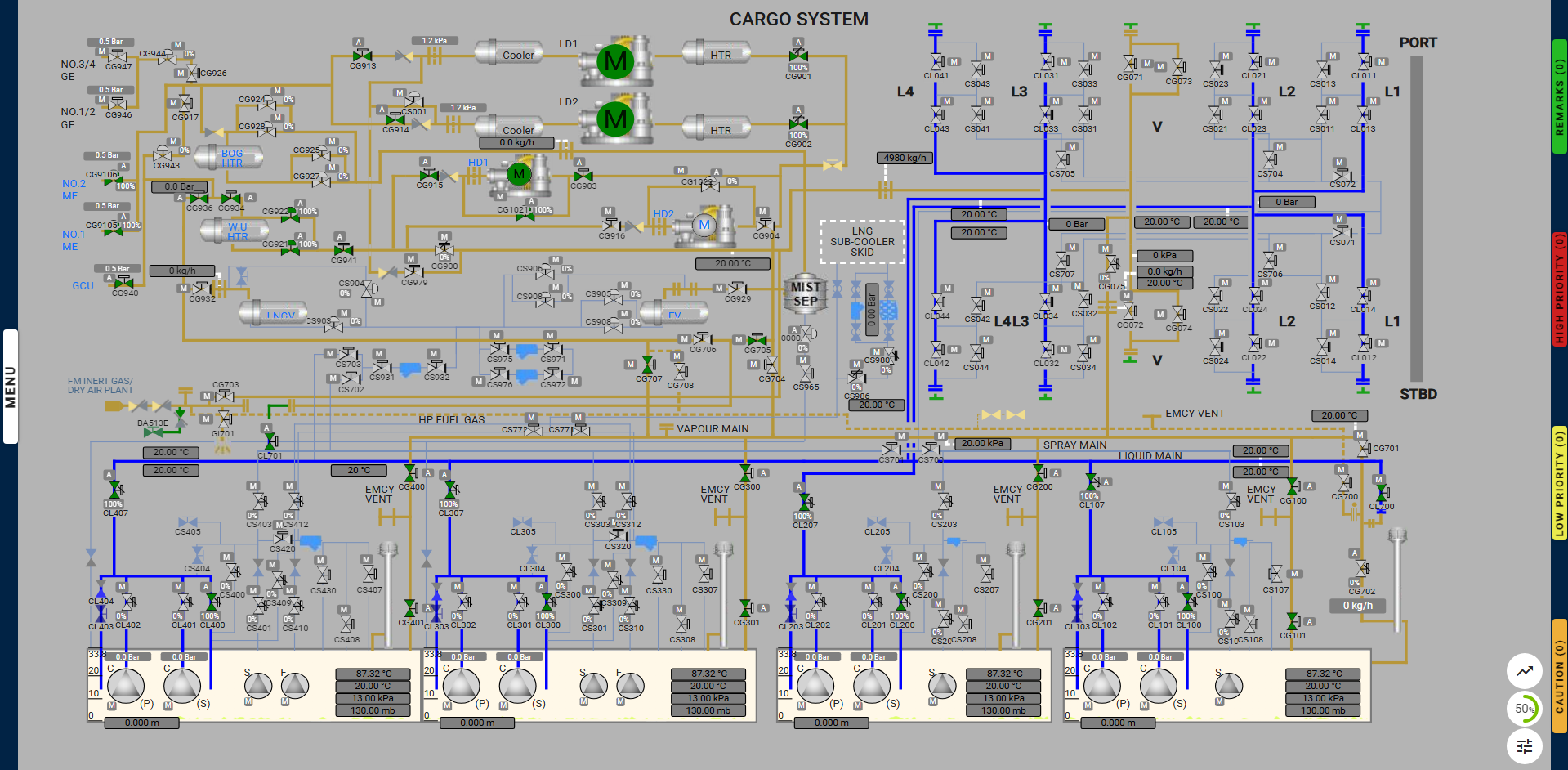

The warming up of cargo tanks is performed in preparation for an upcoming dry dock. This operation is carried out after the tanks have been emptied using the spray pumps. The primary objective is to make the tanks free of liquid and to warm the LNG vapor inside the tanks.
The process is conducted using the high-duty compressor (HD compressor) onboard. The vapor is pushed from the HD compressor to the LNG heater, where the temperature increases. The warmed vapor is then reintroduced into the cargo tank from the bottom, ensuring that any remaining liquid also evaporates.
Participants will be able to effectively demonstrate the process of warming up cargo tanks on
LNG ships to achieve a liquid-free state, understanding the necessary safety protocols,
operational procedures, and the importance of maintaining safe conditions during this
process.
By achieving this objective, participants will gain the knowledge and skills necessary for safely and efficiently
warming up cargo tanks on LNG ships, ensuring they are liquid-free and ready for subsequent operations.
Milestones
Actions During the Exercise:
Deviation From Exercise:
Not Maintaining HD Compressor Flow:
Alarms & Remarks
| Alarm Condition | Alarm Time | Alarm Level | Alarm Title | Alarm Description |
| Reduce Warm Up Heater Vapour Outlet Temperature | Adjust the valve CG 922 to reduce the WU heater Vapour outlet temperature to 20°C | |||
| Warming Up Resumed | Warming of cargo tanks has resumed | |||
| Warming Up Completed | Warming of tanks has been completed. Stop the HD Compressor. |
Step By Step Procedure
|
Valve |
Action |
|
CG707 |
Open |
|
Valve |
Action |
|
CG700 |
Close |
|
Valve |
Action |
|
CG706 |
Close |
|
CG705 |
Open |
|
Valve |
Action |
|
CL700 |
Open |
